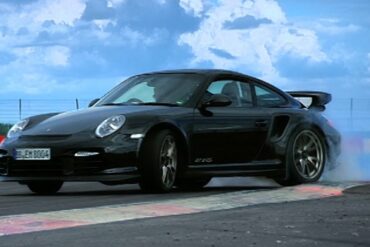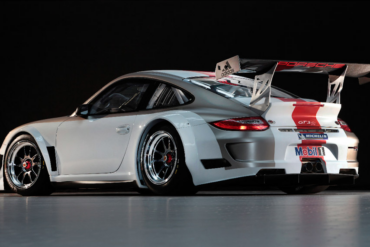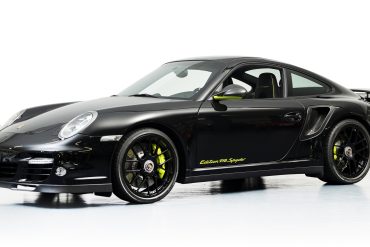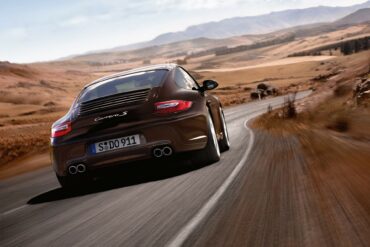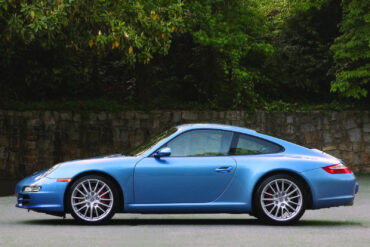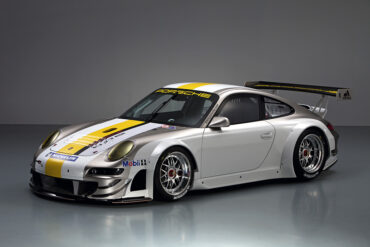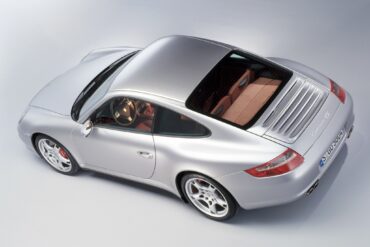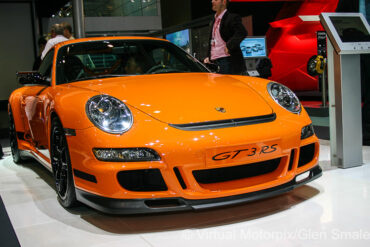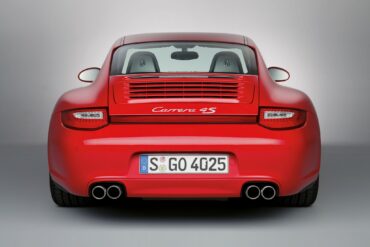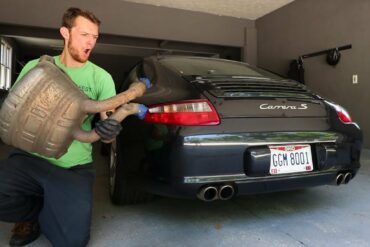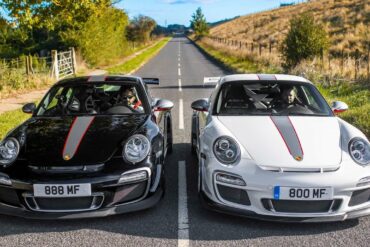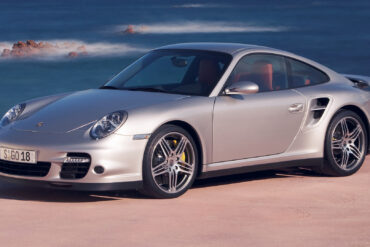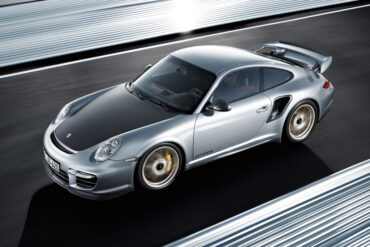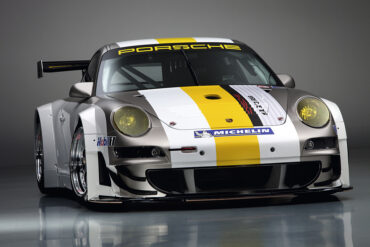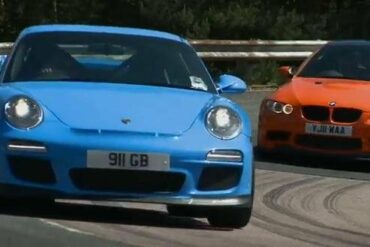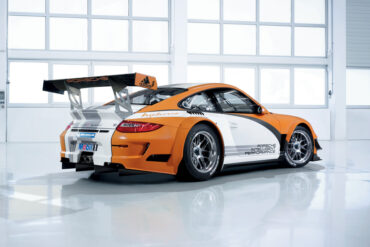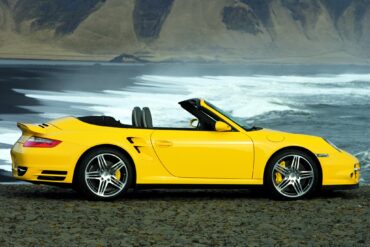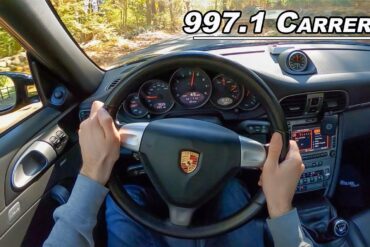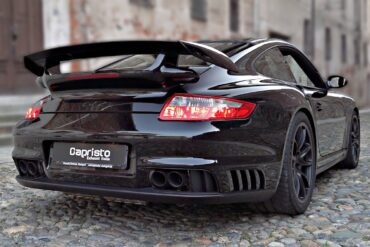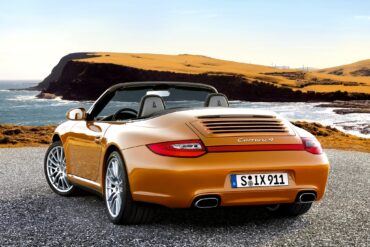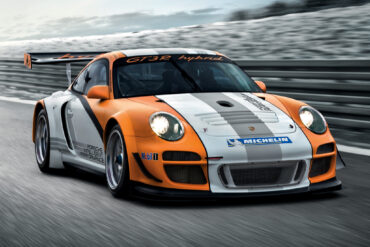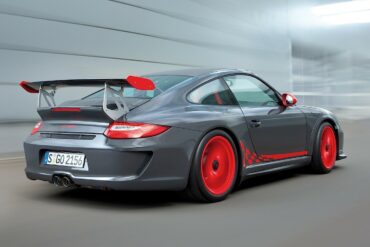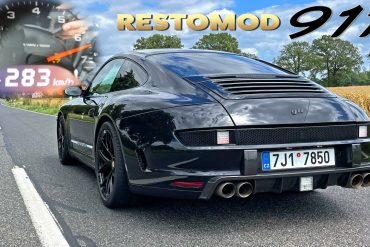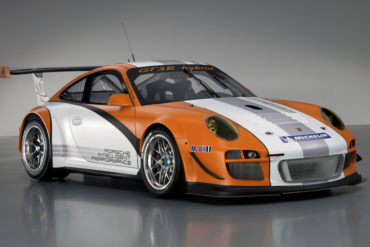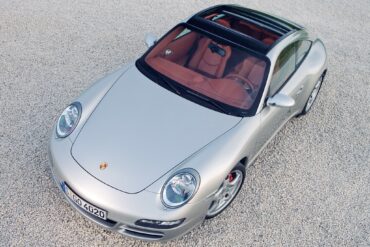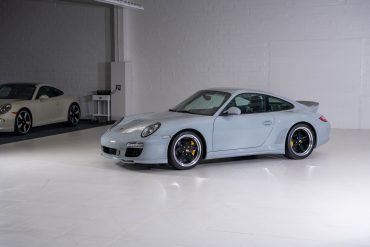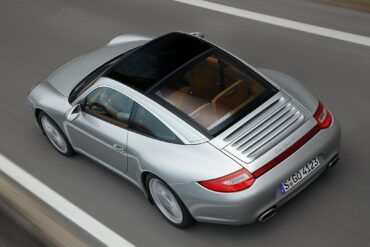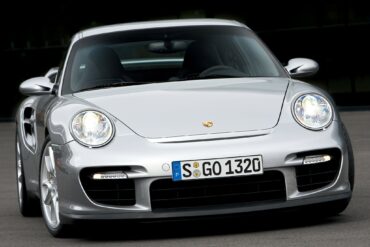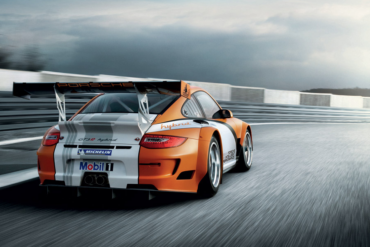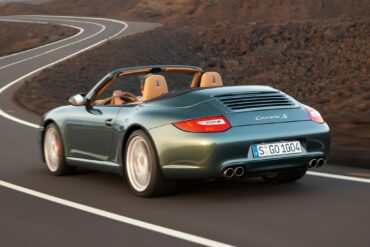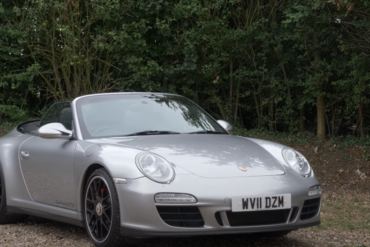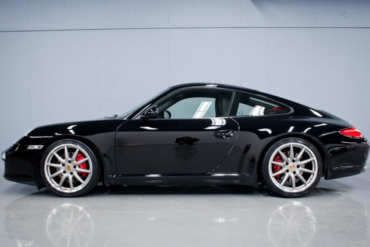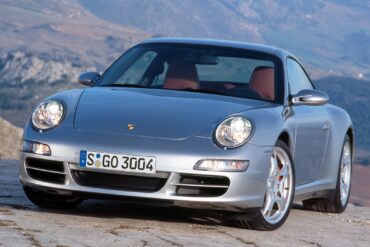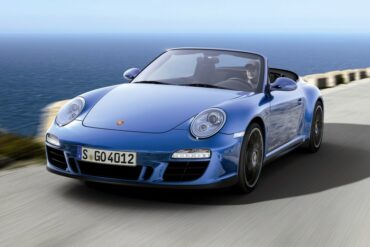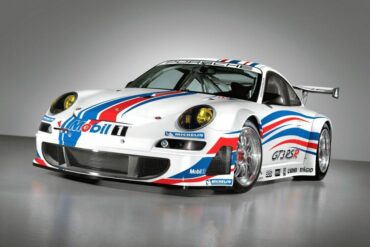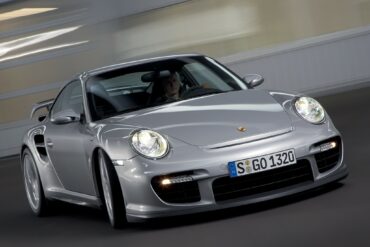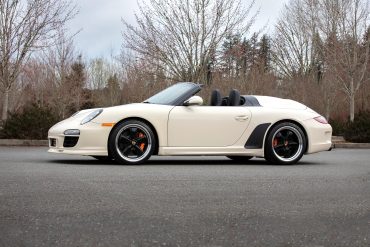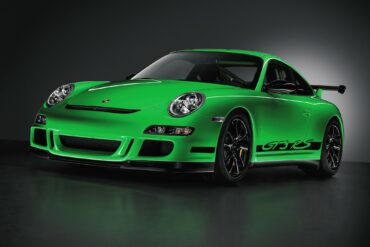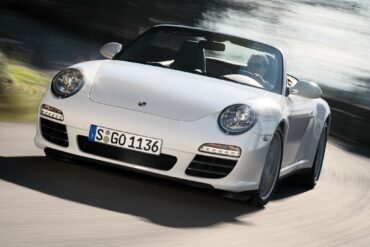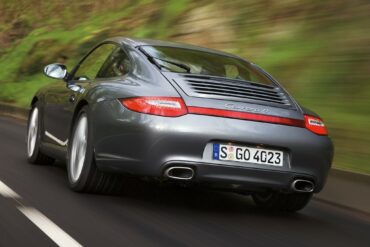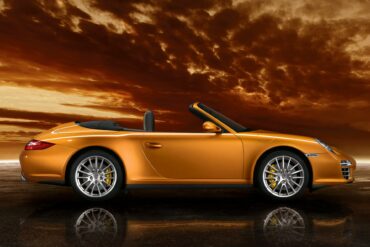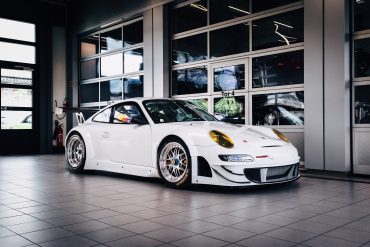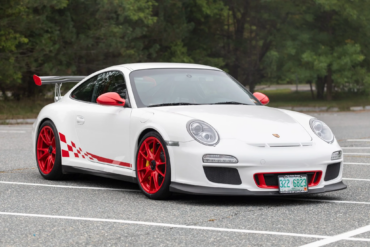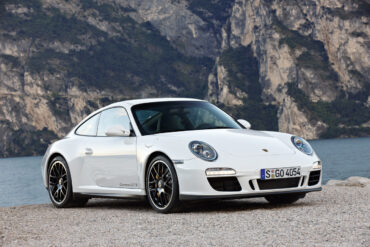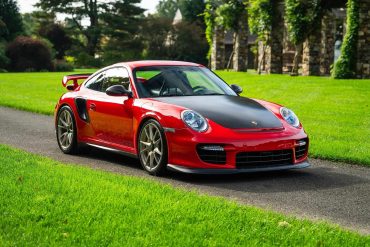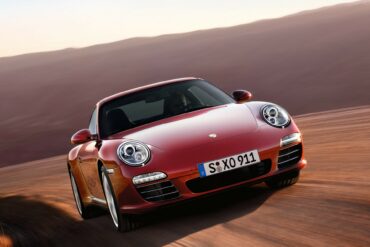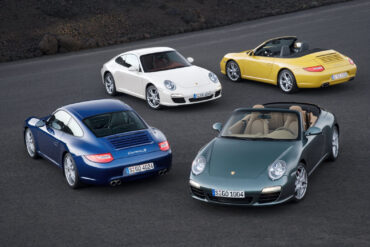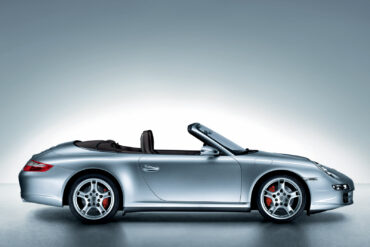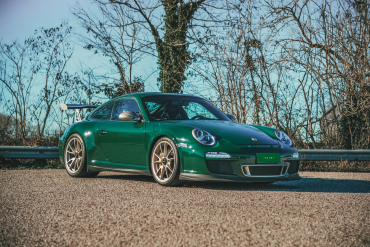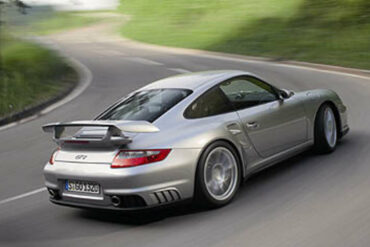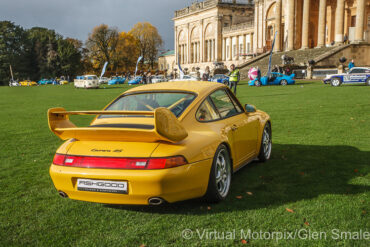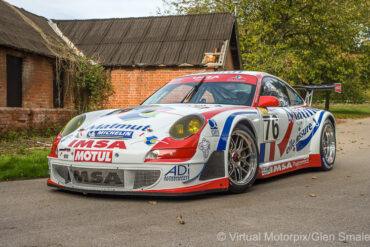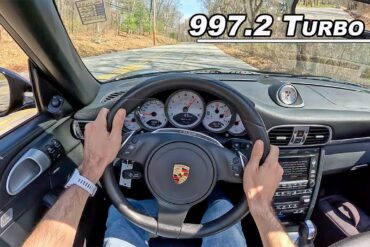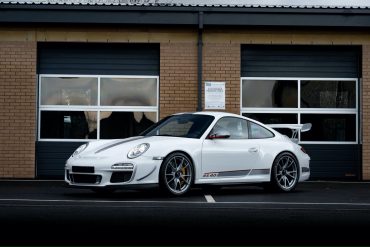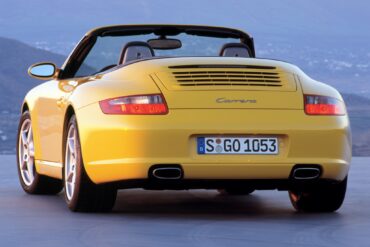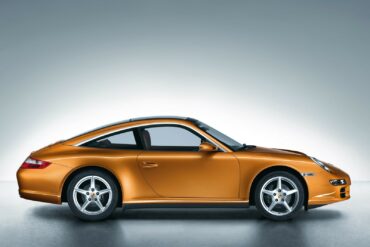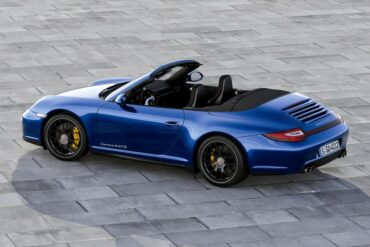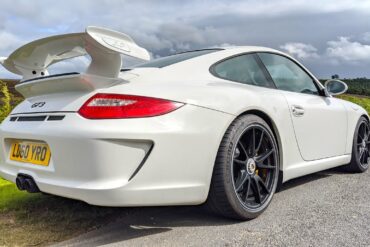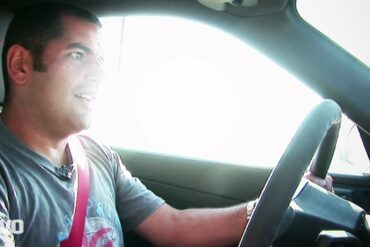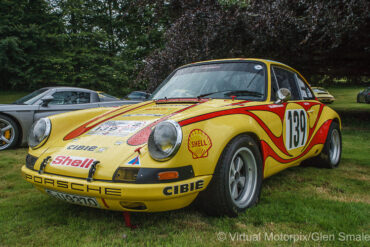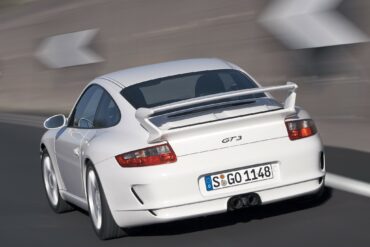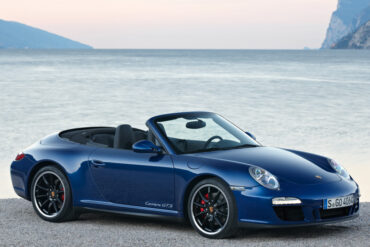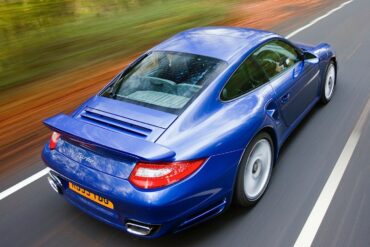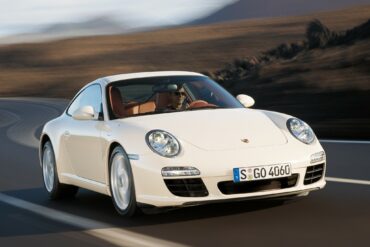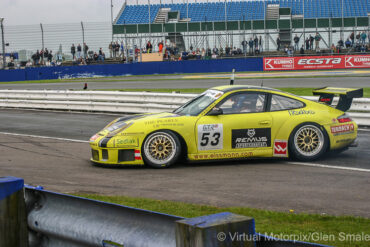2010 Porsche 911 Carrera 4S Cabriolet (997.2) Technical Specifications Engine Type Flat 6 Induction Normally-aspirated Cooling Water-cooled Valvetrain Double overhead camshafts Injection...
The second iteration of the Porsche 911 GT3 for the 997 Generation was introduced in 2010 and came with a...
2005-2007 Porsche 911 (997.1) Carrera, Carrera S, Carrera 4, Carrera 4S, Turbo Service Schedule This maintenance service schedule checklist is...
2011 Porsche 911 Carrera Cabriolet (997.2) Technical Specifications Engine Type Flat 6 Induction Normally-aspirated Cooling Water-cooled Valvetrain Double overhead camshafts...
2009 Porsche 911 Carrera Cabriolet (997.2) Technical Specifications Engine Type Flat 6 Induction Normally-aspirated Cooling Water-cooled Valvetrain Double overhead camshafts Injection...
Porsche 911 (997.2) Carrera, Carrera S, Carrera 4, Carrera 4S Service Schedule This maintenance service schedule checklist is ONLY for...
Based on the already primal 997.2 GT3, the RS gets another 15 hp from the 3.8-liter flat-six for a total of 450, or more than 118 hp per liter. A racing machine tamed for street use, the GT3 RS is hardly just about horsepower. It gets a wider track, it weighs less, and it produces more downforce than the GT3. The only available transmission is a six-speed manual gearbox (with the ratios even shorter than the GT3). A racing machine tamed for street use, the GT3 RS also gets a wider track, it weighs less, and it produces more downforce than the GT3.
Doug DeMuro Reviews the 911 GT3RS 4.0 The 2011 Porsche 911 GT3RS 4.0 is one of the most desirable modern...
The 997 Sport Classic is a limited edition version of the 997.2 Carrera S coupé inspired by the 1973 Carrera RS 2.7. The engine is rated at 413 PS (304 kW; 407 hp) and features a newly developed resonance intake manifold with 6 vacuum-controlled switching flaps. It includes a 6-speed manual transmission, double-dome roof (informally called double bubble roof), 44 mm (1.7 in) wider rear fenders, SportDesign front apron with a front spoiler and a fixed 'duck tail' rear wing. Only 256 were made.
Last Drive Before Hibernation English winters and Michelin Pilot Sport Cup tires don’t mix, so I’m taking one last drive...
Even more powerful, faster and more dynamic than ever before, the updated 997 Porsche 911 GT3 (differentiated from the earlier with a new 997.2 designation) is about to prove its enhanced potential. The Porsche 911 GT3 now reaches an even higher standard in its two main qualities: power and driving dynamics. The naturally-aspirated six-cylinder now increased in size to 3.8 litres is 435 bhp (320 kW), up 20 bhp over the previous model. In particular, the flat-six power unit carefully upgraded for even more muscle and performance offers a significant increase in torque at medium engine speeds. Road performance is spectacular.
Collecting Cars is currently offering a 2010 Porsche 911 (997.2) GT2 RS finished in black over black leather and Alcantara...
The 911 Carrera Cabriolet is a true Porsche, from top to bottom. Like the rest of the range, the base Cabriolet got a mild refresh in terms of design that made it more modern and a little more crisp. The engine was upgraded, now with direct direction. The direct-injection 3.6-liter engine also got new air filters, a more free-flowing exhaust system, and reduced engine friction, making it more powerful than before. It has peak power of 339 bhp @ 6500 rpm and torque of 287 ft lbs @ 4400 rpm. The Carrera equipped with PDK covers 0-60 mph in 4.5 seconds and runs to a top speed of 179 mph.
The 997.2 Turbo was introduced for the 2010 model year and received a new 3.8 litre engine capable of 493 horsepower, a significant evolution as compared to the 473hp in the 997.1 Turbo. The 997.2 Turbo was available in both manual and automatic transmissions, but the automatic evolved from the Tiptronic used in its predecessor, to a sportier dual-clutch PDK. Approximately 3,300 coupes were produced and 1,800 cabrios, far less than its predecessor. An epic all-around GT with more performance than you could ever need.
2012 Porsche 911 GT3 (997.2) Technical Specifications Engine Type Flat 6 Induction Normally-aspirated Cooling Water-cooled Valvetrain Double overhead camshafts Injection Port...
2008 Porsche 911 Turbo Cabriolet (997) Technical Specifications Engine Type Flat 6 Induction Twin-turbocharged Cooling Water-cooled Valvetrain Double overhead camshafts Injection...
2006 Porsche 911 Carrera 4 (997) Technical Specifications Engine Type Flat 6 Induction Normally-aspirated Cooling Water-cooled Valvetrain Double overhead camshafts...
Which Is a Better First Porsche? 996 C4S vs 997.2 C2 If you’re looking to buy your first 911, and...
The 996-generation GT3 RS wasn’t available in the U.S., but that changed with the 997-generation. The standard 997 GT3 made...
2012 Porsche 911 Carrera 4 GTS Coupe (997) Technical Specifications Engine Type Flat 6 Induction Normally-aspirated Cooling Water-cooled Valvetrain Double overhead...
2009 – 2012 Porsche 911 GT3 & GT3 RS (997.2) Service Schedule (3.8 L & 4.0 L) This maintenance service...
While the 997 Carrera 4S coupe sold a healthy 15,056 units between 2006 and 2008, the equally exciting Carrera 4S Cabriolet sold 12,587 units, making it a pretty popular 997 model. The reason is pretty simple. It had a gorgeous wide-body stance, all-wheel drive traction and that potent 3.8 L Flat 6 that was good for 350 bhp and 295 ft lbs of torque. The first convertible 911 that was as good a performer as it coupe siblings with the added benefit of open top driving in the summer with the comfort of being a great daily driver all year round.
Head to Head – Porsche 911 GT3 (997) vs. 911 Carrera S (992) Little separates 997 GT3 and 992 Carrera...
Join Jethro Bovingdon as he drives through beautiful sceneries of Scotland in a Porsche 911 (997) GT3 RS 4.0. ...
2005 Porsche 911 Carrera S Coupe (997) Technical Specifications Engine Type Flat 6 Induction Normally-aspirated Cooling Water-cooled Valvetrain Double overhead...
2011 Porsche 911 GT2 RS (997) Technical Specifications Engine Type Flat 6 Induction Twin-turbocharged Cooling Water-cooled Valvetrain Double overhead camshafts Injection Port...
2012 Porsche 911 Turbo Cabriolet (997.2) Technical Specifications Engine Type Flat 6 Induction Twin-turbocharged Cooling Water-cooled Valvetrain Double overhead camshafts Injection Direct...
Paying homage to the first Porsche model that bore the name Speedster – the 356 Speedster – the production run for the new model is limited to 356 cars. The two-seater is significantly different from the other members of the 911 family. In the best tradition, the 60 millimetre lower, more raked windscreen, the flat contour of the sporty-look manual hood, and the characteristic double-bubble hardcover for the soft top define the striking profile of the new 911 Speedster. This makes the body of this rear-wheel drive with its 44 millimetre wider rear stand out even more.
458 Speciale vs 997 GT3 RS 4.0 Drag Race Welcome back to the 888MF YouTube channel. Sit back and relax,...
“Naturally Aspirated Heroes” Enjoys Some Mezger Magic Naturally Aspirated Heroes is back for series 2! This time, we’re kicking off...
The 997 911 GT3 RS is an even lighter and more purist version of the 911 than the regular GT3. 20 kilograms lighter than the GT3 and equipped with a close-ratio six speed manual the GT3 RS gets to 60 mph 1/10th of a second faster than the GT3. The 911 GT3 RS is 44mm wider at the rear than the GT3. The wider track helps improve directional stability when cornering. Weight savings can be found throughout the car. The Clubsport version there is a bolted roll cage, a six-point harness for the driver and a built in fire extinguisher.
Porsche 997 GT3 RS Chasing A GT3 On Public Roads I’m proud to bring on my channel the best Porsche...
Thrashing Porsche’s Most Epic Car It’s #ThrowbackThursday! Jason is trying out the Porsche 911 GT2 RS to see if it...
2012 Porsche 911 GT3 R (997) Technical Specifications Type Racing Car Built at Weissach, Germany Engine Flat-6 Position Rear, Longitudinal Aspiration...
Inspired by the 918 Spyder, Porsche introduced the 911 Turbo S Edition 918 Spyder that was mechanically identical to the...
2009 Porsche 911 Carrera S Coupe (997.2) Technical Specifications Engine Type Flat 6 Induction Normally-aspirated Cooling Water-cooled Valvetrain Double overhead camshafts...
2006 Porsche 911 Carrera S Club Coupe (997) Technical Specifications Engine Type Flat 6 Induction Normally-aspirated Cooling Water-cooled Valvetrain Double...
2011 Porsche 911 GT3 RSR (997) Technical Specifications Engine B6 w/Dry Sump Lubrication, 29.5 mm Air Restrictors Position Rear, Longitudinal...
2008 Porsche 911 Carrera 4S Coupe (997) Technical Specifications Engine Type Flat 6 Induction Normally-aspirated Cooling Water-cooled Valvetrain Double overhead...
2009 Porsche 911 Carrera 4S Coupe (997.2) Technical Specifications Engine Type Flat 6 Induction Normally-aspirated Cooling Water-cooled Valvetrain Double overhead camshafts Injection...
I Straight Piped My Porsche 911 and It Sounds Insane The time has come to unleash the true beauty that...
Porsche 997 GT3 RS 4.0 Review In this video I put both of my Porsche 997 GT3 RS 4.0 on...
Porsche Option Codes – Porsche 911 (2006 Model Year) Looking to decode your 2006 Porsche 911 option codes? Want to...
Porsche’s 911 GT2 RS is a brute, a lightweight, twin-turbocharged, 620-hp bout of madness that stemmed from Stuttgart’s quest to see how high up the sports-car ladder the 911 could punch. It is the most serious roadgoing Porsche ever. The engine is a port-injected, 3.6-liter flat-six from the Le Mans–winning GT1 race car of the late ’90s, with a pair of variable-geometry turbochargers huffing a maximum of 23.2 psi of boost into the combustion chambers. The result is 620 hp at 6500 rpm and 516 lb-ft of torque at 2250. It gets a six-speed manual gearbox and rear-drive only. Yikes.
Porsche has announced the introduction of the new 2007 911 GT3 RSR (type 997) for the American Le Mans Series and other world GT racing venues. The latest version of the most successful racing sports car in history is based on the street production model 911 GT3 RS (model year 2007) and was launched in late 2006. The 911 GT3 RSR has wider rear fenders and rear track to improve performance capabilities over its predecessor. The car has also been developed to fit into the 1,225 kg class. The new car is built in accordance with the ACO LMGT2 Regulations and the FIA Article 257.
Autocar Compares the BMW M3 GTS to the 997 Porsche 911 GT3 Can the hardcore BMW M3 match the legendary...
During the Geneva Motor Show, a Porsche 911 GT3 R with innovative hybrid drive is making its debut. The innovative hybrid technology featured in the car has been developed especially for racing, standing out significantly in its configuration and components from conventional hybrid systems. In this case, electrical front axle drive with two electric motors developing 60 kW each supplements the 480-bhp four-litre flat-six at the rear of the 911 GT3 R Hybrid. Instead of batteries, an electrical flywheel power generator delivers energy to the electric motors.
2009 Porsche 911 Turbo Cabriolet (997) Technical Specifications Engine Type Flat 6 Induction Twin-turbocharged Cooling Water-cooled Valvetrain Double overhead camshafts Injection...
The Base 997 Carrera is Better Than You Thought The Base 997.1 Carrera is often overlooked because it is the...
Old School Twin Turbo Flat-Six Noises! In today’s video I’ll take you onboard a gorgeous 2009 Porsche 911 997 GT2...
2009 Porsche 911 Carrera 4 Cabriolet (997.2) Technical Specifications Engine Type Flat 6 Induction Normally-aspirated Cooling Water-cooled Valvetrain Double overhead camshafts Injection...
During the Geneva Motor Show in 2010, a Porsche 911 GT3 R with innovative hybrid drive is making its debut,...
2010 Porsche 911 GT3 RS (997.2) Technical Specifications Engine Type Flat 6 Induction Normally-aspirated Cooling Water-cooled Valvetrain Double overhead camshafts Injection...
Earlier this month, Edit Automotive has unveiled its vision of the Porsche 911 named the g11, an intricately crafted sports car predicated on...
The Porsche 997 GT3 R Hybrid 2.0 is an update to the 997 GT3 R Hybrid. Compared to its predecessor, which debuted in 2010, the 2011 second-generation hybrid is 20 percent lighter and more efficient without any concession to lap times. While sharing the same paint scheme, the new vehicle is easily identified by its lack of intakes in front of each rear wheel - changes to engine cooling allowed the slats to be dropped and aerodynamic efficiency improved. It gets a traditional race-bred flat six engine. The GT3 R Hybrid has a completely independent second driveline in the front of the chassis, a clever and complex hybrid electric set up that rockets it from standstill to 60 mph in just 2.5 seconds.
2008 Porsche 911 Targa 4S (997) Technical Specifications Engine Type Flat 6 Induction Normally-aspirated Cooling Water-cooled Valvetrain Double overhead camshafts Injection...
The 997 Sport Classic is a limited edition version of the 997.2 Carrera S coupé inspired by the 1973 Carrera...
2012 Porsche 911 Targa 4 (997.2) Technical Specifications Engine Type Flat 6 Induction Normally-aspirated Cooling Water-cooled Valvetrain Double overhead camshafts Injection...
2009 Porsche 911 GT2 (997) Technical Specifications Engine Type Flat 6 Induction Twin-turbocharged Cooling Water-cooled Valvetrain Double overhead camshafts Injection Port...
2010 Porsche 911 GT3 R Hybrid 4.0 (997) Technical Specifications Engine Configuration B6 Location Rear, longitudinally mounted Construction aluminium block...
2012 Porsche 911 Carrera S Cabriolet (997.2) Technical Specifications Engine Type Flat 6 Induction Normally-aspirated Cooling Water-cooled Valvetrain Double overhead camshafts...
Porsche 997 GTS Review Today, the 997 GTS is revered as one of the high water marks of the 911’s...
Porsche Option Codes – Porsche 911 (2009 Model Year) Carrera/Carrera S/Carrera 4/Carrera 4S, Coupé/Targa/Cabriolet Looking to decode your 2009 Porsche...
Along with its sibling Carrera 4, the 2005 Carrera 4S offered an all-wheel-drive system for the Porsche 911, but unlike the 4, the 4S gets the Carrera S' more powerful engine and it turns out that makes a big difference. The Carrera 4S was the more powerful and more dynamic version of the 997 Carrera 4 and an overall great sports car, especially for those in colder climates who need the safety of all-wheel traction. All rounder that fits nicely in the 911 lineup as perhaps the most practical.
The Cabriolet version of the new Porsche 911 Carrera 4 GTS is just as potent as its coupe sibling. It combines a 408 hp 3.8-litre flat six engine with intelligent all-wheel drive that delivers a further exhilarating dimension to the dynamics of the iconic rear-engined sports car. The 911 was first offered with four-wheel drive in 1989 and the drivetrain has been a popular option ever since. Now, the 911 Carrera 4 GTS broadens customer choice in 2011, building on the success of the two-wheel drive Carrera GTS that went on sale in December last year. Carrera 4 GTS power unit is the 3.8-litre flat six with power kit.
2006 Porsche 911 GT3 RSR (997) Technical Specifications Type Racing Car Built at Weissach, Germany Engine Aluminum Water-Cooled Boxer-6 w/Dry...
The 2008 Porsche 997 GT2 is the most powerful and fastest roadgoing 911 Porsche has ever created. Power for the 997 GT2 comes from a 3.6 litre, twin-turbo, flat-6 cylinder engine which develops 530 bhp @ 6500 rpm, and a tire destroying 505 lb-ft of torque @ 2200 - 4500 rpm. most of the power gains have been achieved with changes to the turbo-charging system and the addition of a high-flow titanium exhaust system. Power is transferred to the rear wheels of through a 6-speed manual giving the car a 0-60 mph time of just 3.6 seconds and a 204 mph top speed.
The 2011 Porsche 911 Speedster is a unique blend of classic features from the original Speedster model, the 356 Speedster,...
2008 Porsche 911 GT3 RS (997) Technical Specifications Engine Type Flat 6 Induction Normally-aspirated Cooling Water-cooled Valvetrain Double overhead camshafts...
2009 Porsche 911 Carrera 4S Cabriolet (997.2) Technical Specifications Engine Type Flat 6 Induction Normally-aspirated Cooling Water-cooled Valvetrain Double overhead camshafts Injection...
2012 Porsche 911 Carrera 4 Coupe (997.2) Technical Specifications Engine Type Flat 6 Induction Normally-aspirated Cooling Water-cooled Valvetrain Double overhead camshafts...
2010 Porsche 911 Carrera 4 Cabriolet (997.2) Technical Specifications Engine Type Flat 6 Induction Normally-aspirated Cooling Water-cooled Valvetrain Double overhead camshafts Injection...
In 2008, Porsche unveiled a new and much improved version of the GT3 RSR. Distinguished from its predecessor by a...
Delivering even more engine power, lower weight and shorter transmission ratios, as well as upgraded body and suspension components than...
In 2011, Porsche China released a special limited edition model to celebrate an active decade in the Chinese market. The Porsche 10 Year Anniversary Edition is yet another 911 of only ten copies, each with a stylish plaque with the chassis number. The Porsche has a Gold Bronze Metallic paint, combined with matte black carbon components such as the hood, rear wing, tailgate and side mirrors. Underneath, you will spot a 911 Turbo S. The interior is a combination of black with gold stitching leather, alcantara and carbon.
2011 Porsche 911 Carrera GTS Coupe (997) Technical Specifications Engine Type Flat 6 Induction Normally-aspirated Cooling Water-cooled Valvetrain Double overhead camshafts...
Porsche introduced the 997 GT2 RS in the United States in October 2010 with an initial price of $245,000 MSRP....
For 2009, engine power is distributed to all four wheels via the same electronically controlled Porsche Traction Management system found previously only on the Porsche Turbo. The electronic controls respond to driving conditions even more instantaneously than the previously used hydraulically activated all-wheel drive system. The Carrera 4S model, with a 3.8-litre engine developing 355 bhp, can go from 0 to 60 mph in 4.5 seconds and has a top speed of 185 mph.
Sorry, but you do not have permission to view this content....
2008 Porsche 911 Carrera 4S Coupe (997) Technical Specifications Engine Type Flat 6 Induction Normally-aspirated Cooling Water-cooled Valvetrain Double overhead...
Based on the already primal 997.2 GT3, the RS gets another 15 hp from the 3.8-liter flat-six for a total...
The 997 GT2 RS Is the Fastest Stick-Shift Production Porsche Ever Chris Harris drives the all new 911 GT2....
Le Mans 24 Hours, 16-17 June 2007: Busy grid just before the start of the race Porsche introduced their new...
The convertible version of a performance car is often debated as unnecessary by some people, citing the reduction in structural...
Built to homologate the 2011 GT3 RSR racecar, the RS 4.0 is fitted with the 3996cc engine which raises power output...
2006 Porsche 911 Carrera Cabriolet (997) Technical Specifications Engine Type Flat 6 Induction Normally-aspirated Cooling Water-cooled Valvetrain Double overhead camshafts...
2008 Porsche 911 Targa (997) Technical Specifications Engine Type Flat 6 Induction Normally-aspirated Cooling Water-cooled Valvetrain Double overhead camshafts Injection...
2012 Porsche 911 Carrera 4 GTS Cabriolet (997) Technical Specifications Engine Type Flat 6 Induction Normally-aspirated Cooling Water-cooled Valvetrain Double overhead...
Porsche 997 GT3 Review Thanks to my good buddy Tom, I got behind the wheel of his incredible Porsche 911...
GT3 RS 4.0 RS Ride & Review Chris Harris reviews the evo cars of the year...
Rennsport Collective, Donington Hall, 20 July 2019: Porsche 996 GT1 Evo 1997 on display with numerous other Porsche classics They...
Everybody knows we are huge fans of the Porsche 997, but if you were shopping for one today, which one...
2007 Porsche 911 GT3 (997) Technical Specifications Engine Type Flat 6 Induction Normally-aspirated Cooling Water-cooled Valvetrain Double overhead camshafts Injection Port...
The GTS was powered by the same engine that was installed under the limited-edition Porsche 911 Sport Classic, but it was offered with more options. It wasn't just a driver's car, it was built for the passenger as well, with more options for comfort. From the outside, the Carrera GTS Cabriolet featured the same wide body as the Carrera 4 Cabriolet. At the front, the sport design apron featured a black lip-spoiler underneath. The Carrera GTS logo was painted on the doors. In the back, the car was fitted with LED taillights and four-round exhaust pipes. The 19” light-alloy wheels with central log-nut were fitted as standard.
2010 Porsche 911 Turbo (997.2) Technical Specifications Engine Type Flat 6 Induction Twin-turbocharged Cooling Water-cooled Valvetrain Double overhead camshafts Injection Direct Fuel...
Porsche refers to it as a new generation, even though the internal chassis code 997 remains unchanged. The 997.2 therefore is more of a mid-term facelift with some significant technological changes. Notably, the water-cooled flat-six engines get direct-injection technology, and a seven-speed, dual-clutch transmission replaces the previous five-speed Tiptronic automatic while the shift-it-yourself option remains a six-speed. Base Carrera coupe gets 339 bhp and 287 ft lbs and a 0.3 second faster 0 - 60 mph time of 4.5 seconds. Top speed now 179 mph. A nice update indeed.


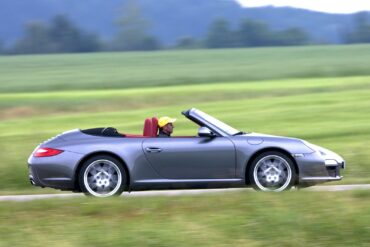
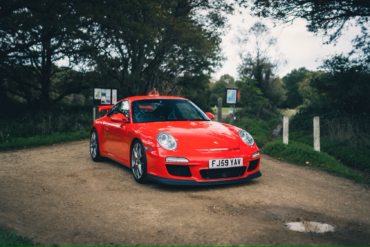
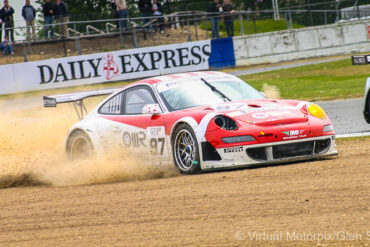
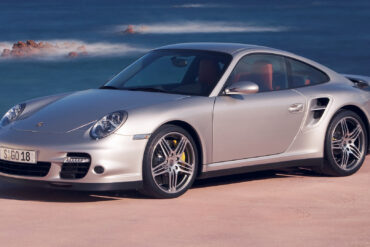
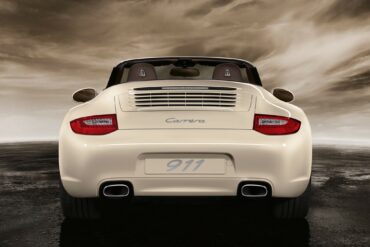
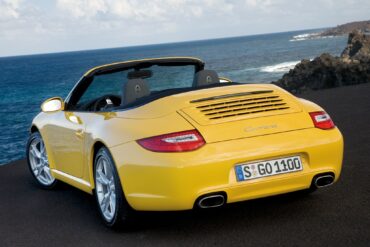
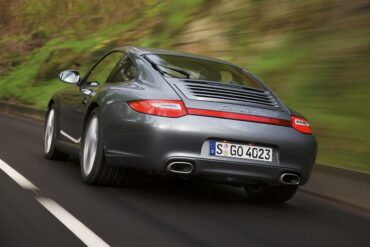
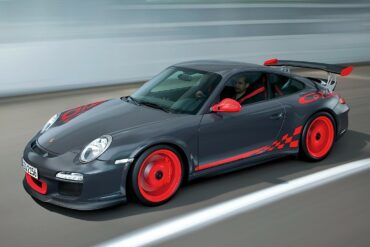
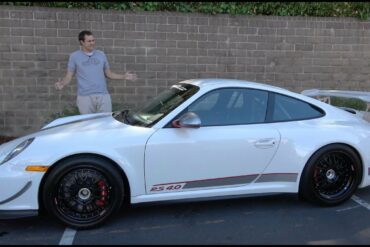
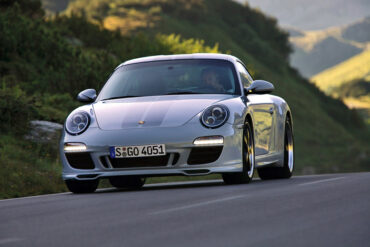
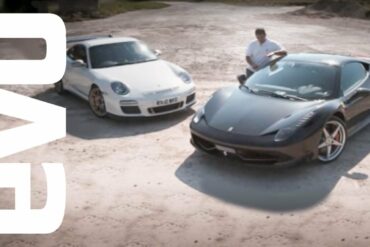
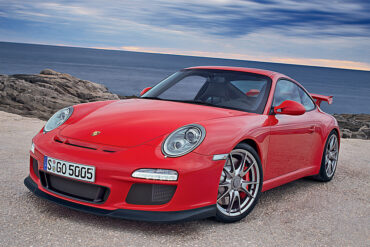
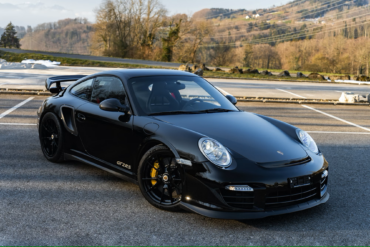
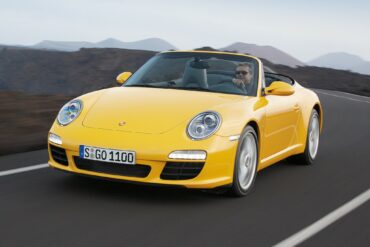
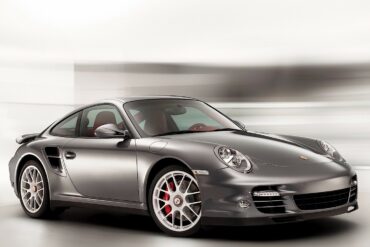
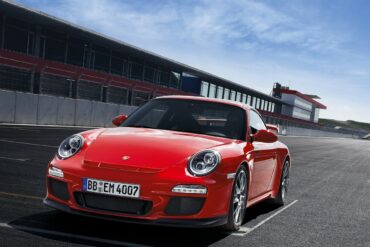
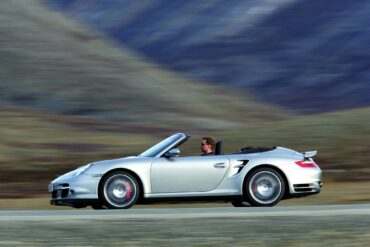
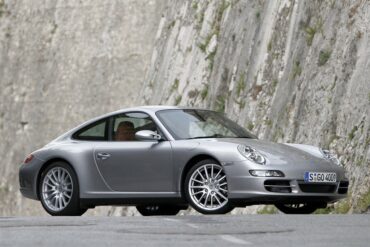
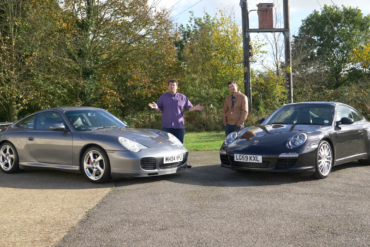
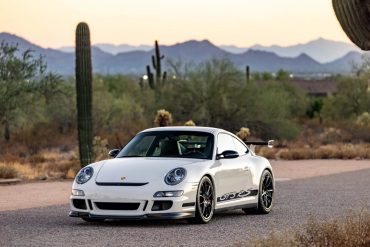
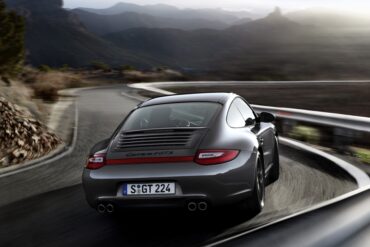
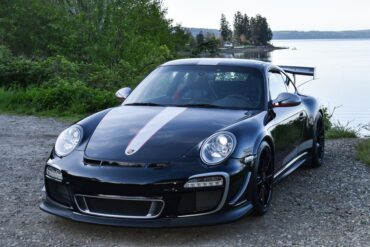
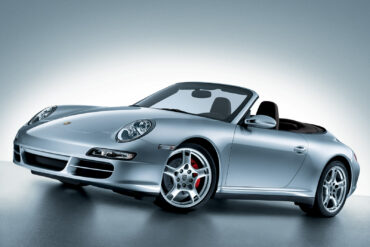
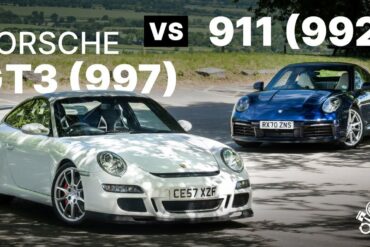
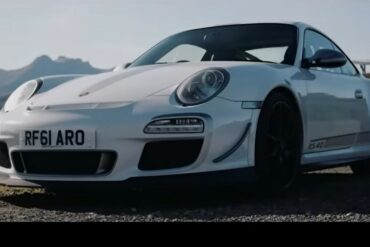
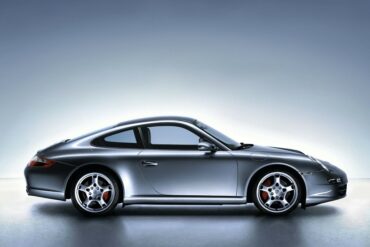
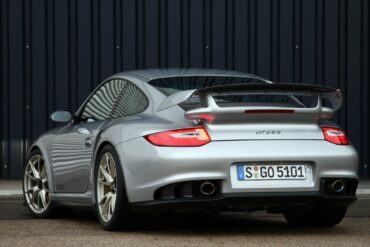
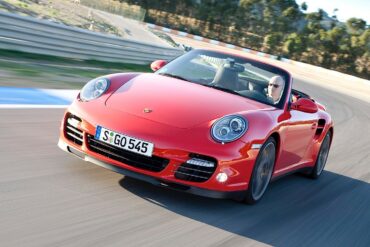
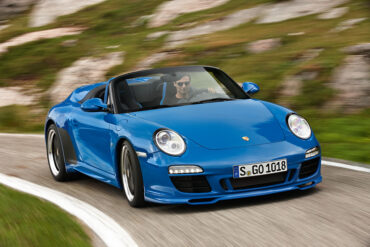
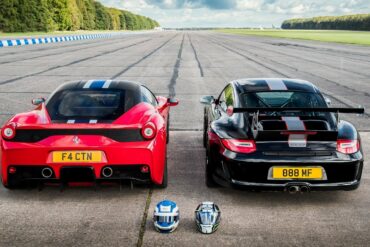
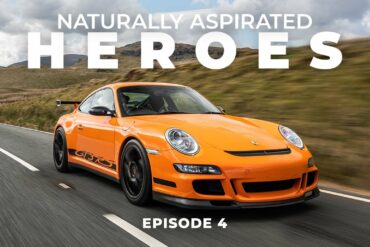
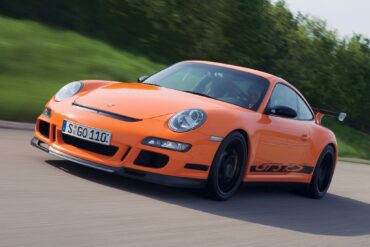
![Porsche 997 GT3 RS - ORGASMIC SOUND [CHASING PORSCHE 996 GT3] RAW POV](https://www.stuttcars.com/wp-content/uploads/2018/06/Porsche-997-GT3-RS-ORGASMIC-SOUND-CHASING-PORSCHE-996-GT3-RAW-POV--370x247.jpeg)
